In a mixer jar, grind coriander seeds, cumin seeds, fennel seeds, fenugreek seeds, and cinnamon sticks to a coarse powder.
Wash red lentils and soak them in water for ten minutes.
Switch on the flame and add water to the soaked red lentils.
Add fenugreek seeds, turmeric powder, shallots, curry leaves, pandan leaf, green chillies, and garlic cloves.
Mix all the ingredients and simmer the dal slowly until fully cooked, giving it an occasional stir.
Add red chilli powder, salt, curry powder, and coconut milk. Mix well and cook for a minute.
In a tempering pan, heat coconut oil and add mustard seeds, cumin seeds, garlic cloves, shallots, and dried red chillies. Cook until the shallots turn light brown.
Pour the tempering over the dal.

Ingredients
Directions
In a mixer jar, grind coriander seeds, cumin seeds, fennel seeds, fenugreek seeds, and cinnamon sticks to a coarse powder.
Wash red lentils and soak them in water for ten minutes.
Switch on the flame and add water to the soaked red lentils.
Add fenugreek seeds, turmeric powder, shallots, curry leaves, pandan leaf, green chillies, and garlic cloves.
Mix all the ingredients and simmer the dal slowly until fully cooked, giving it an occasional stir.
Add red chilli powder, salt, curry powder, and coconut milk. Mix well and cook for a minute.
In a tempering pan, heat coconut oil and add mustard seeds, cumin seeds, garlic cloves, shallots, and dried red chillies. Cook until the shallots turn light brown.
Pour the tempering over the dal.
Notes
Tips
Toast the whole seeds: Before grinding the spices for the curry powder, consider toasting the whole seeds in a dry skillet for a few minutes. This process will enhance their flavors and aromas.
Experiment with spice levels: If you enjoy spicier food, you can increase the amount of green chillies or red chilli powder. Conversely, if you prefer milder flavors, reduce the amount of these ingredients accordingly.
Adjust consistency: While simmering the dal, monitor its consistency. If it becomes too thick, you can add a little more water to achieve the desired thickness.
Use fresh ingredients: Whenever possible, opt for fresh ingredients like shallots, garlic cloves, and curry leaves to enhance the overall taste and aroma of the dish.
Garnish creatively: Consider garnishing the dal with fresh cilantro leaves or a squeeze of lime juice just before serving. This adds freshness and a burst of flavor to the dish.
Let the tempering sizzle: When adding the tempering to the dal, ensure that the oil is hot enough to sizzle when the ingredients are added. This helps to release the flavors and aromas of the spices in the tempering.
Make it ahead: Dal often tastes even better when prepared in advance and allowed to sit for a few hours or overnight. This allows the flavors to meld together, resulting in a more delicious and well-rounded dish.
Serve with accompaniments: Serve the dal with steamed rice or naan bread for a complete and satisfying meal. You can also consider pairing it with pickles, yogurt, or a side of roasted vegetables for added variety.
Store and reheat properly: If you have leftovers, store the dal in an airtight container in the refrigerator. When reheating, add a splash of water or coconut milk to maintain its creamy consistency.
FAQs
Q. Can I use store-bought curry powder instead of making my own?
A: Yes, you can use store-bought curry powder as a substitute for making your own.
Q. Can I substitute the red lentils with a different type of lentil?
A: Yes, you can substitute the red lentils with a different type of lentil if desired.
Q. Is there a substitute for pandan leaf if I can’t find it?
A: If you can’t find pandan leaf, you can omit it.
Q. Can I adjust the spiciness level of the dal?
A: Yes, you can adjust the spiciness level of the dal by adding more or fewer green chillies or red chilli powder according to your preference.
Q. Can I use canned coconut milk instead of fresh coconut milk?
A: Yes, you can use canned coconut milk as a substitute for fresh coconut milk.
Q. How long should I let the tempering cook for?
A: You should cook the tempering until the shallots turn light brown.
Q. Can I make this recipe in advance and reheat it later?
A: Yes, you can make this recipe in advance and reheat it later. Just make sure to store it properly in the refrigerator.
Recipe Suggestions
Have you tried this recipe?
Mention us @satyamskitchen and tag #satyamskitchenrecipes
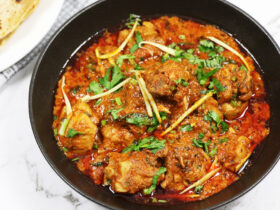
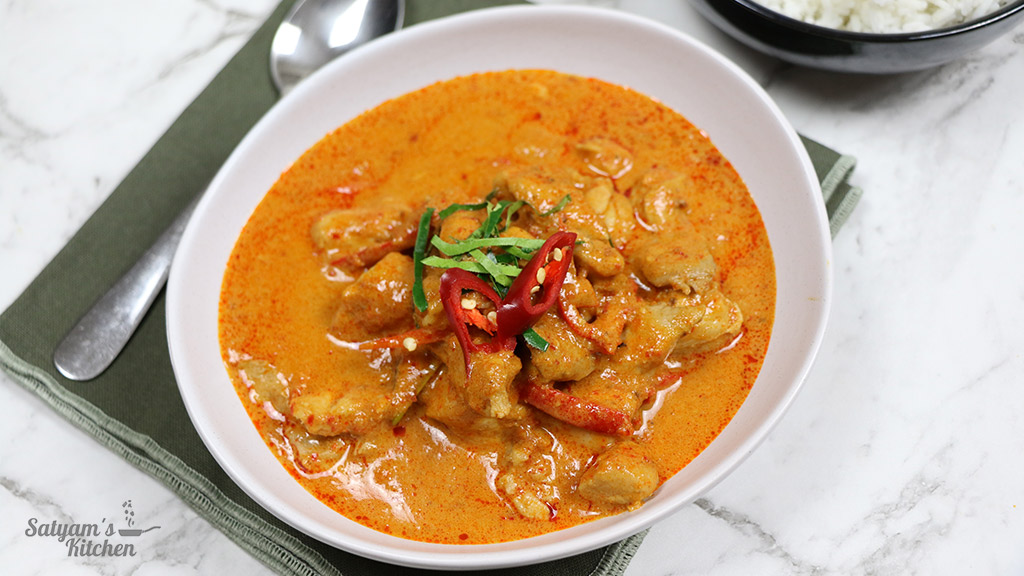
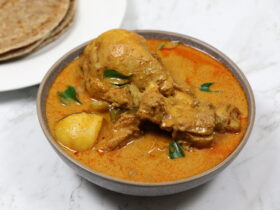




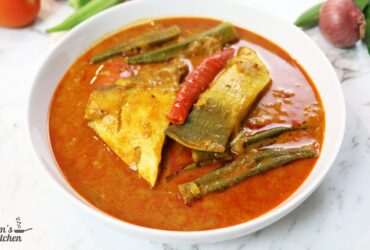
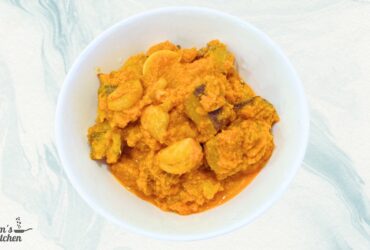
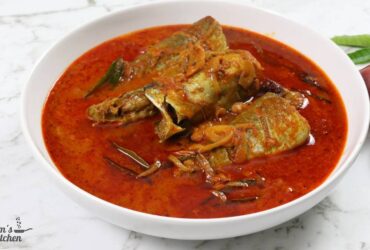
What is pandan?
This sounds really good!!
Pandan is a tropical plant with long, green leaves that have a sweet and fragrant aroma, similar to a mix of vanilla and jasmine. People use these leaves in cooking, especially in Southeast Asian cuisines, to add a unique flavor and scent to dishes, desserts, and drinks. It’s like a special ingredient that makes food and drinks smell and taste really good!